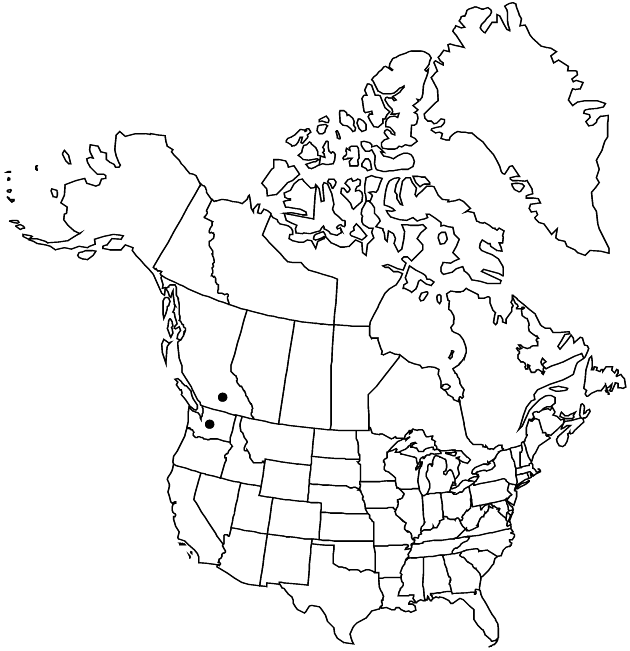Eucephalus paucicapitatus
Pittonia 3: 56. 1896.
Perennials 20–55 cm (caudices woody). Stems ascending to erect, pilose or glandular-pubescent. Leaves: mid and distal blades elliptic to elliptic-oblong, 2–4 cm × 4–13 mm, sparsely scabrous to stipitate-glandular abaxially, moderately stipitate-glandular adaxially. Heads usually 2–4 in racemiform to corymbiform arrays, somtimes borne singly. Peduncles stipitate-glandular. Involucres turbinate-obconic, 7–9 mm. Phyllaries in 2–3 series (whitish), lance-linear (unequal), apices acute, abaxial faces stipitate-glandular. Rays 7–13 (–21), white. Cypselae obconic, pilose; pappus bristles in 2 series, ± barbellate.
Phenology: Flowering Jul–Aug.
Habitat: Open subalpine meadows or scree slopes
Elevation: 800–3300 m
Discussion
Eucephalus paucicapitatus is found on Vancouver Island, where it is very uncommon, and the Olympic Peninsula. It is closely related to E. gormanii.
Selected References
None.
